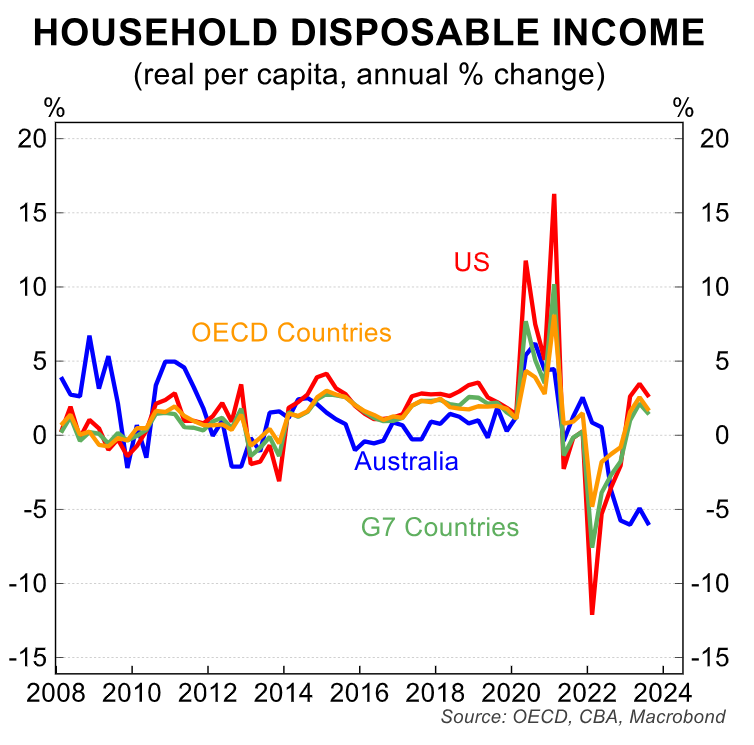As it should. Albonomics is designed to enrich a narrow set of immigration-exposed industries at the cost of everybody else:

The jig is up:
Australians are caught in a squeeze of rising prices and high borrowing costs, with a Resolve poll last week showing over half of respondents describing themselves as being on the brink of economic hardship. The survey finds that only 27% of voters trusted Labor on economic management, down from almost 40% two years ago.
It is going to get worse:
The Reserve Bank will hold its cash rate at a 12-year high of 4.35% for most of 2024, with the odds of monetary easing now seen in November instead of September, according to the median estimate in a Bloomberg survey. At the start of the year, the talk in Canberra was that the Labor government may call an early election to ride the momentum of rate cuts anticipated in the second half.
Now, with at least one analyst — Capital Economics — predicting a hike at next week’s RBA meeting, prospects of an early relief from lower rates are fading. Money markets have switched from pricing in strong chances of a cut this year to now ascribing a near-60% probability of another 25-basis-point increase to 4.6% – a level last seen in October 2011.

Meh, the RBA only just lifted its tightening bias. A violent reversal would reek of panic. The disinflation is only marginally off track:

I see plenty of trouble for Albonomics as living standards keep falling, but no panic from the RBA yet.

